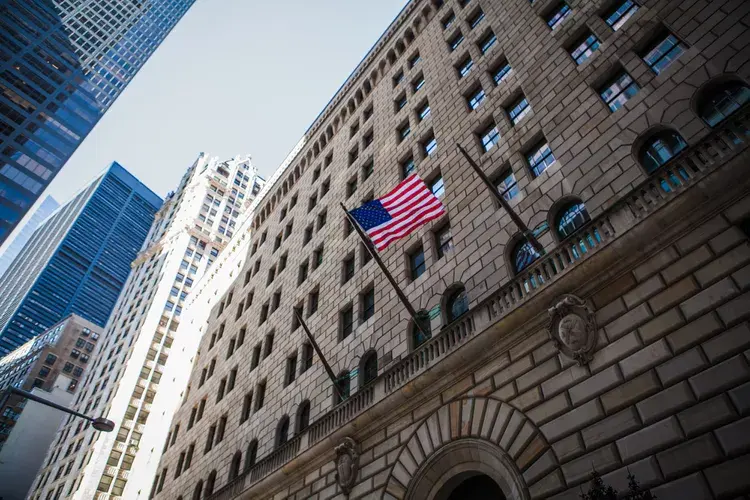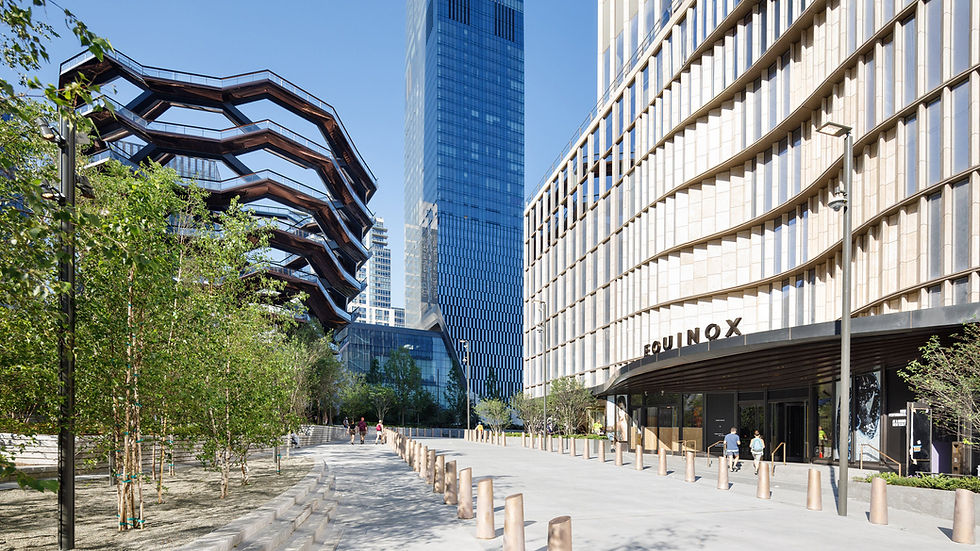Weekly Market Report - June 17, 2022
- Norman Bobrow

- Jun 16, 2022
- 5 min read
***
The vast majority of Americans, particularly those in the service sector and low-wage jobs, have been working in person throughout the pandemic. But those who were able to work remotely got attached to the flexibility. In a January survey, the Pew Research Center found that 60 percent of workers whose jobs can be done at home wanted to work remotely most or all of the time. R.T.O. plans have unfolded like a giant game of chicken. Executives told workers to come back to the office, then delayed their plans as Covid cases continued to spike.
Business leaders accepted the uncertainty, hoping it was temporary. Until it was clear that it wasn’t. Workers got extra time at home, and extra leeway to test the rigidity of their bosses’ plans. Now some companies are expecting people back but have lost the leverage to enforce that because of the constant flux in deadlines. Some executives hope that if they can get their employees to spend some time in the office, the workers will realize that they liked it more than they remembered. Some business leaders have taken a harder line. Elon Musk, for example, told SpaceX and Tesla employees that they would have to spend a minimum of 40 hours in the office or be fired. Many others, like Google and Microsoft, have opted for a softer tack by filling their workplaces with cold brew, snacks, tote bags and beer. But those corporate carrots have their limits, and few are willing to try out the sticks. Many companies are accepting the reality that requiring a return to the office could put them at odds with their peers and mean losing out on talent.
In some industries, and in some areas of the country, an office-centric culture is becoming a quirk, not a norm. But for executives who haven’t doubled down, larger questions loom over the future of their offices. Take Manny Medina, chief executive of Outreach, an artificial intelligence sales company with roughly 600 employees in Seattle, most of whom are encouraged to spend 40 percent of their work time in the office. From a mostly empty office, Mr. Medina said he had grown accustomed to fielding challenges from employees about the value of in-person collaboration.
***
New York City is making a comeback. After the US was briefly frozen by Covid, the city started to see more movement than the rest of the country, much of it in one direction: out. Now, that migration out of many NYC neighborhoods has reversed. In fact, even as the city’s population is still decreasing, more households are moving into Manhattan now than were moving in before the pandemic in 2019. A gradual return to in-office work, at least part-time, and the city’s enduring allure as a global destination are driving some people back. Limited and increasingly expensive housing inventory outside the city may also be making it harder to leave. “I feel like people have no choice but to stay where they are, because it’s just too difficult to find something,” said Anthony Lando, a realtor for homes in New York’s Rockland and Westchester counties. But overall, the New York metro area is still seeing more people moving out than moving in, a trend that predates the pandemic.
Experts warn that based on the current status of New York City’s recovery, some of the bruises to the population inflicted by Covid will likely endure. Only 36.6% of office workers in the New York metro area were back to working in person in the week ending June 1. Those motivated to move out of New York City because they were working from home tend to be looking for more square footage. That drives prices up. “When people spend more time at home, they’re more focused on having a nice dwelling,” he said. “Our relative budget share on housing goes up, but there’s a fixed stock of housing.” A recent working paper released by the National Bureau of Economic Research found that in the aggregate, US housing costs rose an estimated 15.1 percentage points as a direct result of remote working.
***
Governor Kathy Hochul with New Jersey Governor Phil Murphy today announced that the Metropolitan Transportation Authority, in partnership with Amtrak and NJ TRANSIT, is requesting proposals from architecture and engineering firms to guide the Penn Station Reconstruction effort recently outlined in the Penn Station Master Plan study that was announced in the fall. Governor Hochul's plan calls for the transformation of Penn Station into a modern, spacious, light-filled facility that is easy to navigate, while also revitalizing the surrounding neighborhood to prioritize the public realm and social services, invest in affordable housing, increase transit access and shared streets, and create a pedestrian-friendly streetscape. Penn Reconstruction will modernize the concourse experience for passengers with improved platform connectivity, streamlined wayfinding and enhanced amenities. The future expansion of Penn Station will add track and platform capacity and be fully integrated with a reconstructed Penn Station.
***
Cipriani to Get New Lifeline With Money From Hedge Fund
King Street Capital Management is in advanced talks to refinance about $150 million of operating debt held by Cipriani’s U.S. subsidiary, according to people familiar with the matter. That funding would retire loans dating back to 2018 from Ares Capital Corp. , a business-development company that lends to midsize businesses. King Street would also extend additional funding that would help the company grow its brand in the U.S., these people said. Cipriani, which manages 11 Manhattan restaurants, lounges, clubs and event spaces, has long been associated with celebrities and glitzy nights out.
New York City Mayor Eric Adams celebrated his election victory at Casa Cipriani, a luxury hotel and private members’ club on the downtown Manhattan waterfront that opened last September. Cipriani’s New York restaurants and event spaces suffered during the pandemic, when public-health restrictions prevented restaurateurs from offering indoor dining for long stretches. It was also deluged with cancellations during a surge in Covid-19 cases caused by the Omicron variant, undermining its lucrative holiday-party and other big-event business. Now, the Prosecco corks are popping again. Cipriani’s business has been recovering over the past several months as the aftereffects of the pandemic recede.
The company recently opened the Bellini restaurant, the centerpiece of a soon-to-open Harry’s Table food market in Manhattan, named after the fizzy cocktail created in Venice by founder Giuseppe Cipriani Sr. At the same time, Cipriani is working to restructure $53 million in mortgage debt backed by two of its properties on 42nd Street and Wall Street, according to people familiar with the matter. The company has been in default since May 2020 on the loan, which is packaged into bonds and was transferred that year to a special servicer.









Comments